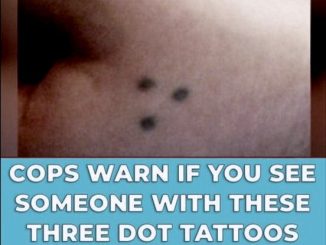
As essential sensory organs, our eyes enable us to see and understand the world around us. Preserving our eyes against dangerous diseases and infections is a crucial part of keeping them in optimal health and maintaining our eyesight.
Many things, such as bacteria, viruses, allergies, and poor eye care techniques, can result in eye infections. We’ll look at a few key tactics in this post that can help you avoid eye infections and keep your vision intact for years to come.

- Frequent Handwashing: One of the best defenses against eye infections is keeping your hands clean. To get rid of dangerous bacteria and viruses, properly wash your hands with soap and water before handling contact lenses or touching your eyes.
- Avoid Eye Touching: Several surfaces that come into contact with our hands could be home to dangerous microbes. Avoid unnecessary eye touching or rubbing, as it can introduce bacteria and irritants, potentially leading to infections or worsening existing ones.
- Proper Contact Lens Care: Follow your eye doctor’s instructions on proper cleanliness if you wear contact lenses. Unless your eye care specialist instructs you otherwise, clean and sanitize your lenses on a regular basis, replace them when necessary, and refrain from sleeping with them on.
- Eyewear Hygiene: If your glasses or sunglasses come into touch with dust, debris, or bacteria, make sure they are cleaned and sanitized on a regular basis to avoid transferring these elements to your eyes.
- Personal Eye Makeup: By dispersing bacteria and viruses, sharing eye makeup products with others raises the risk of eye infections. Avoid borrowing or lending eyeliner, mascara, or eye shadow, and replace your eye makeup regularly to prevent the buildup of harmful microorganisms.
- Protection in Polluted Environments: Use the proper goggles or eye protection if you reside in or are exposed to extremely polluted environments with irritants like smoke, dust, or chemicals to reduce the risk of injury to your eyes.
- Allergy Awareness:Avoid rubbing your eyes if you are prone to allergies brought on by pollen or pet dander and use over-the-counter or prescription antihistamine eye drops to relieve symptoms.
- Maintain a Healthy Lifestyle: Maintaining optimal eye health requires a diet rich in important vitamins and minerals, especially vitamin A, and well-balanced. Include items like salmon, citrus fruits, carrots, and spinach in your diet. In addition to hydrating your eyes, maintaining adequate hydration lowers your chance of developing dry eye infections.
- Regular Eye Exams: Early detection and prevention of eye infections and other eye-related issues require routine eye exams by optometrists or ophthalmologists. These experts are capable of spotting possible issues and offering insightful advice to protect the health of your eyes.
- Give Your Eyes a Break: To reduce eye fatigue caused by prolonged screen time, follow the 20-20-20 rule—every 20 minutes, look at something 20 feet away for 20 seconds. This easy routine can assist in lowering the incidence of eye infections.

In conclusion, you can successfully prevent infections in your eyes by implementing these simple procedures into your everyday routine. You may preserve clean, clear eyesight by doing frequent eye exams, paying attention to eye care products, and emphasizing excellent cleanliness. To preserve your vision and enjoy the world’s beauty with healthy eyes, always remember that prevention is always better to treatment.
How to Keep Your Eyes Healthy
1. Eat Well
Good eye health starts with the food on your plate. Nutrients like omega-3 fatty acids, lutein, zinc, and vitamins C and E might help ward off age-related vision problems like macular degeneration and cataracts. To get them, fill your plate with:
- Green leafy vegetables like spinach, kale, and collards
- Salmon, tuna, and other oily fish
- Eggs, nuts, beans, and other nonmeat protein sources
- Oranges and other citrus fruits or juices
- Oysters and pork
A well-balanced diet also helps you stay at a healthy weight. That lowers your odds of obesity and related diseases like type 2 diabetes, which is the leading cause of blindness in adults.
2. Quit Smoking
It makes you more likely to get cataracts, damage to your optic nerve, and macular degeneration, among many other medical problems. If you’ve tried to kick the habit before only to start again, keep at it. The more times you try to quit, the more likely you are to succeed. Ask your doctor for help.
3. Wear Sunglasses
The right pair of shades will help protect your eyes from the sun’s ultraviolet (UV) rays. Too much UV exposure boosts your chances of cataracts and macular degeneration.
Choose a pair that blocks 99% to 100% of UVA and UVB rays. Wraparound lenses help protect your eyes from the side. Polarized lenses reduce glare while you drive, but don’t necessarily offer added protection.If you wear contact lenses, some offer UV protection. It’s still a good idea to wear sunglasses for an extra layer.
4. Use Safety Eyewear
If you use hazardous or airborne materials on the job or at home, wear safety glasses or protective goggles.
Sports like ice hockey, racquetball, and lacrosse can also lead to eye injury. Wear eye protection. Helmets with protective face masks or sports goggles with polycarbonate lenses will shield your eyes.
5. Look Away From the Computer Screen
Staring at a computer or phone screen for too long can cause:
- Eyestrain
- Blurry vision
- Trouble focusing at a distance
- Dry eyes
- Headaches
- Neck, back, and shoulder pain
To protect your eyes:
- Make sure your glasses or contacts prescription is up to date and good for looking at a computer screen.
- If your eye strain won’t go away, talk to your doctor about computer glasses.
- Move the screen so your eyes are level with the top of the monitor. That lets you look slightly down at the screen.
- Try to avoid glare from windows and lights. Use an anti-glare screen if needed.
- Choose a comfortable, supportive chair. Position it so that your feet are flat on the floor.
- If your eyes are dry, blink more or try using artificial tears.
- Rest your eyes every 20 minutes. Look 20 feet away for 20 seconds. Get up at least every 2 hours and take a 15-minute break.
6. Visit Your Eye Doctor Regularly
Everyone needs a regular eye exam, even young children. It helps protect your sight and lets you see your best.
Eye exams can also find diseases, like glaucoma, that have no symptoms. It’s important to spot them early on, when they’re easier to treat.
Depending on your eye health needs, you can see one of two types of doctors:
- Ophthalmologists are medical doctors who specialize in eye care. They can provide general eye care, treat eye diseases, and perform eye surgery.
- Optometrists have had 4 years of specialized training after college. They provide general eye care and can diagnose and treat most eye diseases. They don’t do eye surgery.
A comprehensive eye exam might include:
- Talking about your personal and family medical history
- Vision tests to see if you’re nearsighted, farsighted, have an astigmatism (a curved cornea that blurs vision), or presbyopia (age-related vision changes)
- Tests to see how well your eyes work together
- Eye pressure and optic nerve tests to check for glaucoma
- External and microscopic examination of your eyes before and after dilation
You might also need other tests.
Step into a world dedicated entirely to man’s best friend – dogs. Our website is a treasure trove of heartwarming news, touching stories, and inspiring narratives centered around these incredible creatures. We invite you to join us in spreading the joy. Share our posts, stories, and articles with your friends, extending the warmth and inspiration to every corner.With a simple click, you can be part of this movement.
You Won’t Believe How Grown-Up Meryl Streep’s Kids Are Now!
Meryl Streep is one of the most famous actresses in Hollywood. She’s had a long career and has been amazing in many movies.
In her personal life, Streep is also a dedicated mom to her kids. Now that her children are grown up, you might be surprised when you see how much her oldest daughter looks like her.

Meryl Streep is known for her acting but keeps her personal life private. She started gaining fame in Hollywood in the 1970s. During that time, she was in a relationship with John Cazale, whom she met while doing theater.
When they met, Streep was 27 and Cazale was 41. He was well-known in acting circles and was friends with stars like Al Pacino, who admired him.
Streep and Cazale fell in love when they worked together on Shakespeare’s play “Measure for Measure.” They moved in together in Cazale’s loft in Tribeca and enjoyed a few happy years while both pursued their careers in entertainment.
Sadly, everything changed in May 1977. Cazale became very ill and had to see a doctor urgently. He was diagnosed with lung cancer, which had already spread to other parts of his body. The doctors said his condition was very serious.

After John Cazale got very sick, Meryl Streep trusted only a few people with the news. Al Pacino was one of them and even took him to some of his doctor visits. In March 1978, Cazale had to go to the hospital and passed away shortly after. Streep stayed with him the whole time.
When Streep told Cazale’s brother about what happened, he asked her to leave Cazale’s apartment right away. Streep didn’t have anywhere to go, so she called her brother Harry for help. He connected her with his friend Don Gummer, who was in Pakistan at that time. Gummer let Streep stay in his apartment, and they started writing letters to each other. Eventually, they fell in love and decided to be together.
Meryl Streep and Don Gummer got married in 1978. They’ve had a happy marriage for over 44 years, which is rare in Hollywood. Gummer is a sculptor, and he’s proud to support his talented wife.

Meryl Streep and Don Gummer have four children together. Their oldest is their son, Henry Wolfe Gummer, born in 1979. He’s an actor and musician who is married to Tamryn Gummer, and they have two kids.
Their second child and oldest daughter is Mamie Gummer, born in 1983. She started acting when she was very young and appeared in her mom’s movie “Heartburn” in 1986. Later, she had a small part in her mom’s famous movie “The Devil Wears Prada.”

Following her mother’s path, Mamie Gummer is now an actress. She has been on TV shows like “The Good Wife,” “Emily Owens, M.D.,” and “Elementary.” Many say she looks just like her mother.
Meryl Streep’s third child is her daughter Grace Jane Gummer, born in 1986. Like her famous mom and older sister, she’s also an actress. Grace has performed on Broadway and won a Theatre World Award for her first Broadway show.

She has been on several TV shows like “The Newsroom” and “American Horror Story: Freak Show.” In 2021, she married Mark Ronson, the DJ known for his hit song “Uptown Funk.” Recently, they shared they’re expecting their first child.
Meryl Streep’s youngest child is Louisa Jacobson Gummer, born in 1991. She’s 31 years old and an actress too. After doing theater for a bit, she starred in the show “The Gilded Age” with Christine Baranski and Cynthia Nixon.
6
Meryl Streep’s four children have all pursued careers in entertainment, just like their famous mother.
It’s wonderful to hear about Meryl Streep’s children and their accomplishments. Share this article with other fans of the actress so they can discover more about her family life!



Leave a Reply